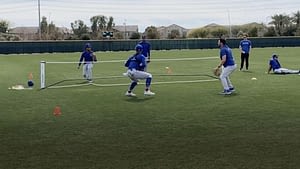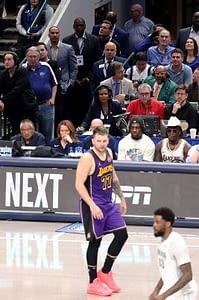The Torpedo Bat: A New Era or Just a Fad?
At precisely 1:54 ET on a Saturday afternoon, the New York Yankees’ play-by-play announcer, Michael Kay, set off a chain reaction that could either revolutionize baseball or become one of its most peculiar episodes. During spring training, Kay had been informed by someone within the Yankees organization that the team’s analytics department had advised players on where pitches typically hit their bats. With this insight, some players had agreed to have their bats designed based on that information. Before the Yankees’ home game against the Brewers, Kay shared this tidbit with the YES Network production team, suggesting they keep an eye out for a chance to showcase this unique equipment.
The opportunity came quickly. After the Yankees smashed four home runs in the first inning, a camera zoomed in on Jazz Chisholm Jr.’s bat in the second inning. “You see the shape of Chisholm’s bat…” Kay commented on air. “It’s got a big barrel on it,” Paul O’Neill chimed in, as Kay elaborated on the analysis behind the torpedo-shaped bat.
Chisholm singled to left field, and shortly after, Anthony Volpe worked the count against former teammate Nestor Cortes to a full count before launching a home run to right field using the same type of bat. A reporter watching the game texted Kay: Didn’t he hit the meat part of the bat you were talking about — just inside where the label normally is?
Yep, Kay replied. Within an hour, the video of Chisholm’s bat and Kay’s exchange with O’Neill was circulating on social media, gaining momentum rapidly. What unfolded over the next 48 hours was a testament to the power of social media and the desperation of hitters struggling with historically low batting averages and high strikeout rates. On a sunny spring day in the Bronx, the Yankees were sending baseballs into the stands with what appeared to be a magical, oddly shaped bat.
Suddenly, an oasis of offense appeared on the horizon, and hitters from all levels, including at least one member of Congress, were eager to explore it. The demand for this new style of bats surged, with acres of trees destined to be transformed into these coveted tools. One bat salesman even asked his boss, “What the heck have we done?”
Jared Smith, CEO of bat-maker Victus, remarked, “I’ve been making bats for 15, 16 years. … This is the most talked-about thing in the industry since I started. And I hope we can make better-performing bats that work for players.”
Bobby Hillerich, vice president of production at Hillerich & Bradsby, shared that his company, based in Louisville, Kentucky, had produced 20 versions of the torpedo bat as of that Saturday. In less than a week, that number had tripled as players and teams placed their orders.
Interestingly, while Saturday marked the bat’s mainstream debut, this shape had been around for a while. Hillerich & Bradsby first encountered the style in 2021 and had nondisclosure agreements with four teams as the bat evolved. Initially, it was known as the “bowling pin” bat. Nico Hoerner of the Cubs was the first major leaguer to try it, but he wasn’t comfortable with it. Cody Bellinger experimented with it when he was with the Cubs before joining the Yankees during the offseason.
Before Atlanta’s game on Sunday night, Braves catcher Drake Baldwin recalled trying one in the Arizona Fall League last year, noting that his first impression was that it “looked weird.” Mets shortstop Francisco Lindor used it in 2024, finishing second in the NL MVP voting. Lindor’s version had a cup hollowed out at the end of the bat. Giancarlo Stanton swung one throughout his playoff surge last fall, but the media didn’t notice, possibly because the pitch-black color of Stanton’s bat camouflaged the shape.
Minnesota manager Rocco Baldelli encountered one in the Twins’ dugout during spring training and was intrigued by the unusual shape. “What the hell is this thing?” he asked, wondering if the design was legal. Assured that it was, he put it back down.
Baldelli’s experience mirrored how hitters have assessed bats since baseball’s inception: They pick up bats to see how they feel, driven by the prospect of success. Tony Gwynn, who won eight batting titles, often had teammates and opponents, including Barry Bonds, asking to inspect his bats. The torpedo bat’s arrival was just the latest iteration of the quest for the perfect tool.
On Opening Day, eight teams had some version of the torpedo bat in their stock, according to a major league source. But with video of the Yankees’ home runs saturating social media, Kevin Uhrhan, pro bat sales rep for Louisville Slugger, was inundated with requests for torpedo bats. Yankees hitting coach James Rowson received about 100 text inquiries. Everyone wanted to know about the bat; everyone wanted one.
In San Diego, Braves players inquired about the bats, prompting equipment manager Calvin Minasian to place an order. By midweek, all 30 teams had requested the bats. “Every team started trying to get orders in,” Hillerich said. “We’re trying to scramble to get wood. And then it was: How fast can we get this to retail?”
Victus, the company producing the bats used by Chisholm and Volpe, made them available for retail. Three senior players, all in their 70s, visited the Victus store to inquire about the torpedoes. A member of Congress who plays baseball reached out to Louisville Slugger.
The Cincinnati Reds contacted Hillerich & Bradsby, saying, “We need you in Cincinnati on Monday ASAP,” prompting Uhrhan and pro bat production manager Brian Hillerich, Bobby’s brother, to make the 90-minute drive from the company’s factory in Louisville with test bats.
Reds star Elly De La Cruz tried a few, chose a favorite, and used it for a career performance that night. “You can think in New York, maybe there was wind,” Bobby Hillerich said. “Elly hits two home runs and gets seven RBIs. That just took it to a whole new level.”
A few days after the Yankees’ explosion, Aaron Leanhardt, who had led New York’s effort to customize its bats as a minor league hitting coordinator before being hired by the Marlins as their field coordinator, found himself surrounded by reporters, explaining the background. “There are a lot more cameras here today than I’m used to,” he said, laughing.
Stanton spoke with reporters about the simple concept behind the bat: build a design for where a hitter is most likely to make contact. “You wonder why no one has thought of it before, for sure,” Stanton said. “I didn’t know if it was, like, a rule-based thing of why they were shaped like that.”
MLB officials repeatedly assured those inquiring that the bats are legal and meet the sport’s equipment specifications. Trevor Megill, the Brewers’ closer, complained about the bats, likening them to “something used in slow-pitch softball,” but privately, baseball officials were thrilled by the prospect of increased offense, something they had been attempting through rule changes in recent years.
“It’s all the rage right now, given what transpired over the weekend,” said Jeremy Zoll, assistant general manager of the Twins. “I’m sure more and more guys are going to experiment with it as a result, just to see if it’s something they like.”
However, some front office types believe the mass orders of the bats don’t account for personal preference. The Yankees’ recommendations to each hitter were based on months of past data on how that player tended to strike the ball. This wasn’t about a one-size-fits-all bat; it was about precise bat measurements tailored to an individual player’s swing.
“I had never heard of it. I’ve used the same bat for nine years, so I think I’ll stick with that,” White Sox outfielder Andrew Benintendi said. “It’s pretty interesting. It makes sense. If it works for a guy, good for him. If it doesn’t, stick with what you got.”
As longtime player Eric Hosmer explained on the “Baseball Tonight” podcast, the process is akin to what players do in golf: look for clubs customized for a player’s particular swing. He added that hitting coaches might begin to consider which bat might be most effective against specific pitchers. If a pitcher tends to throw inside, a torpedo bat could be more effective; if a pitcher is more effective outside, maybe a larger barrel would be more appropriate.
That’s the key, according to an agent representing a player who ordered a bat: “You need years of hitting data in the big leagues to dial it in and hopefully get a better result. He’s still tinkering with it; he may not even use it in a game. … I think of it like switching your irons in golf to blades: It will feel a little different and take some adjusting, and it may even change your swing subtly.”
Two days after the home run explosion, Yankees manager Aaron Boone said, “You’re just trying to just get what you can on the margins, move the needle a little bit. And that’s really all you’re going to do. I don’t think this is some revelation to where we’re going to be — it’s not related to the weekend that we had, for example. I don’t think it’s that. Maybe in some cases, for some players it may help them incrementally. That’s how I view it.”
“I’m kind of starting to smile at it a little more … a lot of things that aren’t real.”
Said the player agent: “It’s not an aluminum bat with plutonium in it like everyone is making it out to be.”
Reliever Adam Ottavino watched this all play out, with his 15 years of experience. “It’s the Yankees and they scored a million runs in the first few games, and it’s cool to hate the Yankees and it’s cool to look for the bogeyman,” Ottavino said, “and that’s what some people are going to do, and [you] can’t really stop that. But there’s also a lot of misinformation and noneducation on it too.”
Major league baseball mostly evolves at a glacial pace. For example, the sport is well into the second century of complaints about the surface of the ball and the debate over financial disparity among teams. From time to time, however, baseball has its eclipses, moments that command full attention and inspire change. On a “Sunday Night Baseball” game on May 18, 2008, an umpire’s botched home run call at Yankee Stadium compelled MLB to implement the first instant replay. Buster Posey’s ankle was shattered in a home plate collision in May 2011, imperiling the career of the young star, and new rules about that type of play were rewritten.
The torpedo bat eruption could turn out to be transformative, a time when the industry became aware how a core piece of equipment has been taken for granted and aware that bats could be more precisely designed to augment the ability of each hitter. Or this could all turn out to be a wild overreaction to an outlier day of home runs against a pitching staff having a really bad day.
On Thursday, Cortes — who had been hammered for five homers over two innings in Yankee Stadium — shut out the Reds for six innings.
In Baltimore, Bregman, who had tried the torpedo bat earlier this week, reverted to his usual stock and had three hits against the Orioles, including a home run. Afterward, Bregman said, “It’s the hitter. Not the bat.”
This story was also reported by Jeff Passan, Jorge Castillo, Jesse Rogers and Kiley McDaniel.
Originally Written by: Buster Olney





















